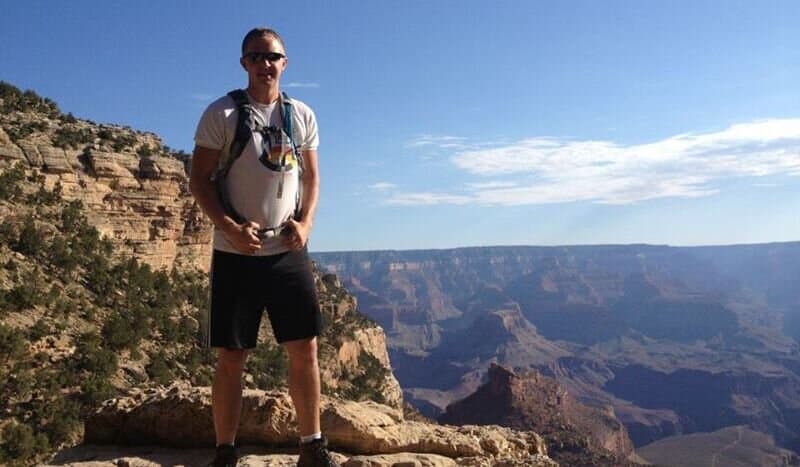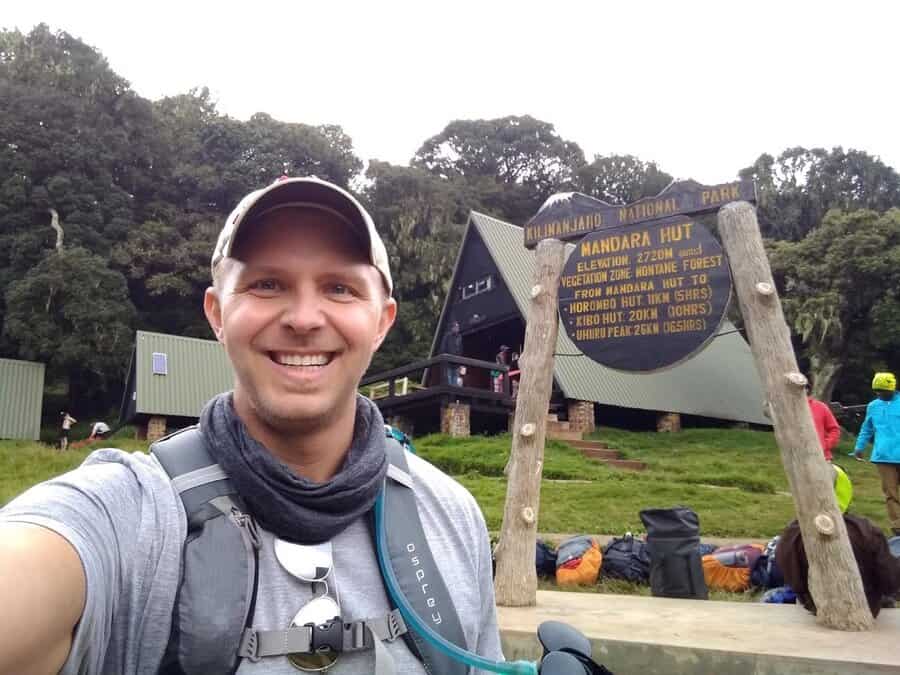
I’ve used everything from old school backpacks to high end hiking daypacks in the field, and I’m pretty confident that I have found the best backpack for rockhounding on the market.
The most important quality in a backpack is comfort. It doesn’t matter how much gear you can stuff in there or how many pockets it has if you can’t stand to wear it for hours on end.
As an Amazon Associate, I earn from qualifying purchases.
The Backpack I Personally Recommend
After many trips to the field with uncomfortable backpacks that weren’t designed for the job, I finally bit the bullet and found the perfect backpack for me. The best backpack for the money that I would recommend is the Osprey Stratos 24 (link to Amazon).
I purchased this backpack over 10 years ago. The model has since been updated, but because it is such a high quality backpack I haven’t had the need to buy a new one. It is a very versatile and comfortable backpack that will perform admirably in almost any situation.
I have used the backpack in geology field camp when I graduated college. In addition to the many smaller outings I’ve used it on, I have brought it with me to Iceland, the Grand Canyon, and even to the top of Mt. Kilimanjaro!

What I Love About the Osprey Stratos 24
- Breathability – This is by FAR my favorite thing about this backpack. I sweat a lot, and one of the worst parts about wearing a pack in the heat all day is the sweat running down my back into places I don’t want to talk about. The Stratos 24 has a mesh backing that separates the bulk of the pack from your back, allowing air to flow freely and prevent sweat buildup. This was an absolute game changer for me, and I’ll never go back to a pack that doesn’t have this feature.
- Size – The Stratos 24 is the perfect size for a day excursion. You can cram a surprising amount of stuff in the main compartment. On my trek up Kilimanjaro I packed rain gear, water, a first aid kit, toilet paper, a fleece pullover, jacket, and a lunch with room to spare. That’s not including the many smaller pockets that are conveniently located all over the pack. That being said, if you are travelling lighter for the day you won’t feel ridiculous carrying the backpack around. It’s still a very reasonable size and it has straps to tighten up the main compartment and keep it from flopping around.
- Weight Distribution – This backpack is amazingly comfortable because of the weight distribution system. The waist straps allow you to carry the bulk of the weight on your hips, which hold up much better than your shoulders during a long day of rock hunting. You can adjust the straps to suit any size – my wife (who is much smaller than me!) has worn this pack comfortably many times. You can adjust for waist size, torso length, and shoulder width, which makes it suitable for people of all sizes. I have covered miles and miles of territory in a day (and over a series of days) wearing this backpack and it just feels like a part of me.
- Accessibility – There are a ton of handy pockets and features on this backpack that drastically increase your quality of life in the field. My favorite are the zipper pockets on the front of the waist straps. I always keep snacks and my multitool in them, along with any other small items that I know I might be needing frequently throughout the day. There are also some handy hiking pole straps on one side that I found particularly useful when trekking Kilimanjaro. They are also perfect for holding your rock hammer if you don’t have a belt sheath.
- Water – When you’re out in the field all day, water (and lots of it) is an absolute necessity. The main compartment of this pack comes equipped with an elastic pouch that allows you to slide in a water reservoir/camel pack. There are a lot of options out there but I would recommend Osprey’s 3L water reservoir (link to Amazon). It’s the perfect size for the pack and it’s built to compliment the Stratos 24 pack. It’s also really easy to clean, which is a huge plus. There are also stretch mesh pockets on either side of the pack that you can keep extra water bottles in, and they are pretty easily accessible while walking without taking the pack off.
- Rain Protection – You can’t always predict the weather when you’re out searching for rocks and minerals, so the rain protection that the Stratos 24 provides is a great feature. At the bottom of the pack there is a small pouch containing a rain cover that easily pulls out and fits over the backpack. This simple feature protects the backpack and everything in it. I’ve only needed it a handful of times but I was sure glad to have it when I did.
Features to Look For in a Backpack
- Adjustable straps for comfort
- Waist straps to save your shoulders
- Adequate room and accessibility to water
- Appropriate size
- Enough compartments for your needs
What to Avoid in a Backpack
If you plan on spending any significant time in the field (looking for rocks and minerals, just hiking, or both) then I would really advise investing in a quality backpack. Avoid using an old school backpack or a rucksack. These just aren’t designed for these types of activities and I promise you’ll regret using them this way. Your shoulders will be killing you and you’ll be constantly taking the pack on and off when doing work in the field. A quality backpack is well worth the money and will last you for years to come.
